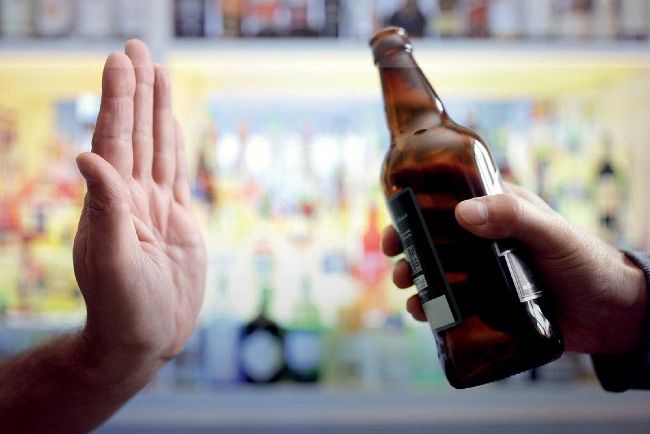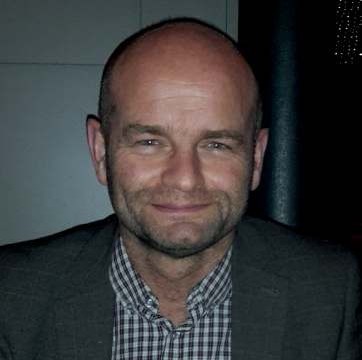Abstinence and addiction
Jackie Macadam charts the history of abstinence in the Church of Scotland and examines the continuing work with addicts at home and overseas.
COVER

Photo: iStock
THE Church of Scotland has always had a slightly uneasy relationship with alcohol. On the one hand, there’s the oft-pointed to Biblical text where Jesus turned the water into wine for the wedding party.
On the other hand, the Church has decades of work involved with trying to help people affected adversely by someone with a problem with alcohol or some other addiction in the family, and the devastation that can result on a myriad of physical and emotional levels. This is against a background of Scotland becoming the first country in the world to introduce minimum pricing on alcohol in May.
The Rev Professor Hector Morrison, Principal of Highland Theological College, examines the beginnings of the issue.
“Heavy drinking is not a new phenomenon in Scotland. By the end of the 18th century it was already a well-established characteristic of the Scottish population not least in that, post-Culloden, beer, which had been the everyday drink especially in the Lowlands, began to be replaced by whisky, the Highlander’s preferred drink. Whisky consumption was abetted by a plethora of illicit stills and from 1822-3 was further exacerbated by efforts to deal with illegal distilling. These included a 75% reduction in duty. The result, however, was a market awash with cheap alcohol and a threefold increase in the consumption of spirits within a decade.
“By the 1830s it was reckoned that the average weekly intake of an adult Scot was a pint of duty-charged whisky and a pint of beer, with the drinking of spirits by those under the age of 15 also being a recognised problem,” he explains.
“As the 19th century progressed, concern began to grow about the attendant social and moral problems of this increased consumption and the first significant steps to combat these were taken with the formation of the Glasgow and West of Scotland Temperance Society in 1829, a move, doubtless, inspired by the first significant temperance society in the world, founded three years earlier by two Presbyterian ministers in the United States.
“In Scotland, however, it was not initially the clergy who headed up the temperance movement, but Christian laymen, like John Dunlop, a Greenock magistrate, and the Glasgow printer and publisher William Collins, both of whom were evangelicals deeply impacted by Thomas Chalmers’ ministry in Glasgow. In the following years, temperance societies sprang up rapidly across Scotland and throughout each region of the UK.
“Initially and following the lead of the American body, these societies called only for abstinence from the drinking of spirits, with members still free to partake of beer and wine. This proved to be more attractive to the middle classes, who were able to continue their enjoyment of wine while calling on the working classes to forego their whisky.
“Within a few years, however, influenced by a movement begun by Joseph Livesey in Preston in 1832, voices within the temperance groups began to call increasingly for total abstinence from all alcohol, or teetotalism. As a result, Abstinence Societies began to appear across Scotland. However, the Scottish Presbyterian penchant for division surfaced among the teetotalers with a further struggle ensuing between advocates of the so-called ‘short pledge’ and those of the ‘long pledge’, the former swearing not to touch drink themselves, the latter, in addition, committing themselves to refrain from offering alcohol to others. “This total abstinence movement, which tended to be much more working-class than was previously the case, aimed at the moral reformation of drinkers.
It soon gained the upper hand over the moderationists, its work in Scotland being aided greatly by the Scottish Temperance League, founded in Glasgow in 1844.
“But by the 1850s these ‘moral suasionists’ were beginning to flag, perhaps discouraged by their failure to impact the annual alcohol consumption figures, which, after almost two decades of fervent campaigning, showed that per capita consumption of duty-paid spirits was about 2% more than it had been in the late 1820s. “At this point, another division began to appear in the temperance movement with a growing choir of voices calling for state-control and the legal prohibition of alcohol. In Scotland this rift was evident in the significant tensions between the Scottish Temperance League and the supporters of the United Kingdom Alliance (UKA), which in 1853 began to call for the compulsory closing of all drink outlets.
“We’ve already noted the significant role played by Christian laymen in the early stages of the temperance movement in Scotland. But, for the most part, at both regional and national levels, the attitude amongst the clergy was one of indifference or opposition, at least in the early years and decades.
“Among Presbyterians, the Moderates distrusted the ‘enthusiasm’ of the temperance societies, including their links with the political aspirations of the Chartists. On the other hand, many Evangelicals opposed the movement, deploring its strong emphasis on selfeffort, which they regarded as being inimical to the gospel message of salvation by the grace of God alone through faith alone in Jesus Christ alone. Some even forbade the use of their church buildings for meetings of the temperance societies.
“The Scottish hierarchy in the Catholic Church was no more enthusiastic towards the movement than were the Protestants, although it has to be said that perhaps the greatest temperance speaker of all from amongst the clergy was an Irish Catholic priest, Father Theobald Mathew, who was warmly welcomed to Glasgow in 1842 by both Protestant and Catholic leaders of the Scottish temperance societies – no mean feat at that time.
“After the Disruption, the Free Church and the United Presbyterians became much more favourable towards temperance, with the Free Church appointing a Temperance Committee in 1847. The sabbatarianism of these evangelical denominations, alongside their growing support for the temperance movement, helped to bring about the Licensing (Scotland) Act of 1853 which forced the closure of Scottish pubs on Sundays and introduced a closing time, and with developments the Church of Scotland Temperance Committee morphed into the Church’s present-day Social Care Council, CrossReach, which, amongst other services provided, continues to minister to those entrapped by substance misuse. It runs a number of residential rehabilitation services for such, among them is Beechwood House in Inverness where wonderful gospel work is done ‘providing residential rehabilitation, community outreach, support and social care, to men and women with alcohol and drug issues.”
Vic Walker is the Head of Substance Misuse, Homelessness and Criminal Justice services for CrossReach.
“As a society we use alcohol in a wide range of settings; at most celebrations, with a meal, as a means to relax – and many people appear to use it without problem.
However in the range of settings I’ve worked in, I’ve seen the other face of alcohol – the destructive power of alcohol,” says Vic.
As a society we use alcohol in a wide range of settings; at most celebrations, with a meal, as a means to relax – and many people appear to use it without problem. However in the range of settings I’ve worked in, I’ve seen the other face of alcohol – the destructive power of alcohol.

The Rev Hector Morrison, Principal of Highland Theological College

The Rev Jacob Manda, of Grace Presbyterian Church in Livingstone, Zambia

Vic Walker is the Head of Substance Misuse, Homelessness and Criminal Justice services for CrossReach
“We work hard in our homelessness services to be friendly and welcoming and good relationships are built up. Sadly alcohol abuse can often make a person more aggressive and often it seems like you are dealing with a totally different person as they change from friendly and helpful to aggressive. We always work with people to try and help them reduce the harms caused by alcohol and ideally help them through to abstinence, but that can’t be forced – sometimes we just need to keep encouraging.
“For many, as we hear their stories, their early lives are where the problems started – we now talk much more about Adverse Childhood Experiences – which may have led to someone taking alcohol to cope with stress or even trauma. In such cases alcohol may seem like ‘the solution’ but it soon becomes ‘the problem’.
“I’ve met people who have lost everything – their job, their relationships, their home, their money, their health – even their dignity, as alcohol has taken over and dominated their lives.
“We have done an amazing job over the years, helping people back from the brink of life, building up their health and helping them see that life is worth living again.
But life will often remain a challenge – the challenge of staying offa substance that everyone else seems to be using and having a good time, the challenge of resisting that first drink when alcohol is stacked high and sold cheap in supermarkets and the challenge of coping with loneliness and low mood without resorting to a comforting drink.”
But it’s not all bad news. Vic adds: “It’s great to see lives changing for the better: “For many that may be the simple step of being supported out of homelessness, away from vulnerability and towards their own home.
“For others it is about flexible support in order to keep them in their own home and avoid all the physical and human cost of eviction – support to pay the bills first (the essentials: rent, power, food) rather than all your benefits going on alcohol. Our staffoften hang in there, sometimes when other agencies have pulled back – going the extra mile to help someone (even when, sadly, they don’t seem to want to help themselves) “But often we meet others who have decided to stop – who’ve had enough, they are ‘sick of being sick’ as they sometimes say. In our rehabs they can detox safely and then start to come alive again, building themselves up with a healthy diet, engaging in community living, working through issues with staffor in counselling and often volunteering to give back.
“It’s great to see this happening and the most inspiring are those who go on to help others. We’ve developed a Recovery Volunteer programme to help them in this regard. The programme teaches people like D – who seemed on the road to self destruction, having nearly died on several occasions and then finally was inspired to change. They learn how to use their own experiences to draw alongside people who need inspiration, to complement the staffteam, to work to professional boundaries and help others into recovery. And all this seems to consolidate their own recovery as they grasp that they have a new purpose in life; that they do have something to offer and some of the ‘wasted’ years can be redeemed.”
It’s not just about being drunk and damaging your liver.
“Alcohol at its worst can affect so many areas of life,” says Vic.
“It has destroyed so many relationships with caring partners left carrying the shame or bearing the brunt of aggressive behaviours. It impacts children’s lives, contributing to poverty and neglect and sadly leaving children confused by behaviours they see and leading to family breakdown. People affected by the alcohol abuse of others usually need support themselves.
“Then there is the cost to the health service. We have long known that alcohol abuse leads to liver damage, but it’s now clear that there is an even greater risk of cancer – alcohol has now been linked to seven different types of cancer.
“Recent figures indicated that there were 41,000 alcohol related hospital admissions in Scotland in one year (AFS), 15,000 ambulance call outs per year were alcohol related and 3700 people a year die as a result of alcohol misuse – and that doesn’t take into account the costs to society – the burden on NHS, cost of policing and legal system, loss of potential, cost to benefit system and so on.”
The problems are not just confined to Scotland.
Some churches abroad still encourage their flock to reject alcohol.
The Rev Jacob Manda, of Grace Presbyterian Church in Livingstone, Zambia, has seen first-hand the impact alcohol abuse has had on his congregation.
“Grace Presbyterian Church is located in the shanty compound of Malota in Livingstone and is within the bounds of Maramba Township. The compound is surrounded by a vast population of people facing different challenges and it is from here the congregation is drawn. Alcohol abuse is a very serious concern to the community because some homes have been turned into a tavern and open as early as 06:00 hours daily. This is a big concern to me as a Pastor, because some of our members are struggling with issues of addiction to alcohol.
“We suffer from a lack of employment, and an abundance of family problems and leisure.
According to them alcohol drinking gives them a relief and they forget about the problem because once they are sober problems become a bother again.
“We have broken homes and those headed just by children due to the parents drinking problems; a high rate of divorce; violence in the family, claiming the lives of women AND men due to a death from alcohol and violence and of course, the economical devastation to the community.
“We advocate for temperance and abstinence. We thank God that some have honestly come out seeking help and have been able to transform their lives.
“The Gospel is Good News about Jesus Christ who was given to us and we must look at the Imagodei (image of God) in a drunkard and addicted person. If we can do that, then we shall address the needs of our society.”
In our rehabs people can detox safely and then start to come alive again, building themselves up with a healthy diet, engaging in community living, working through issues with sta or in counselling and often volunteering to give back.

Photo: iStock